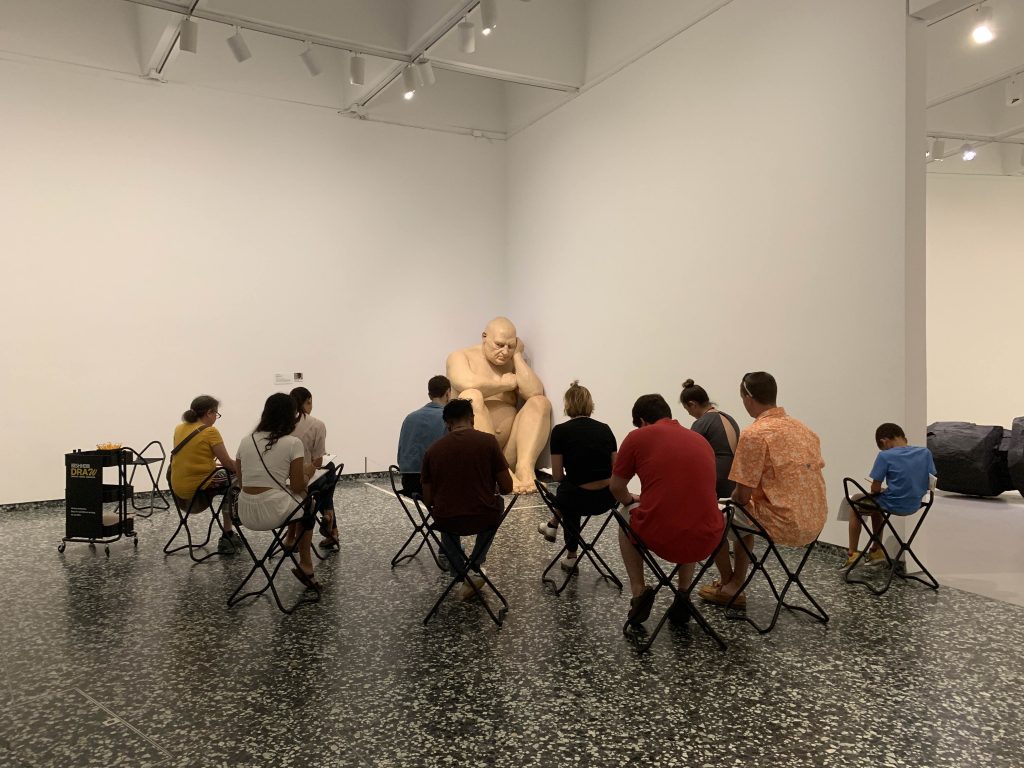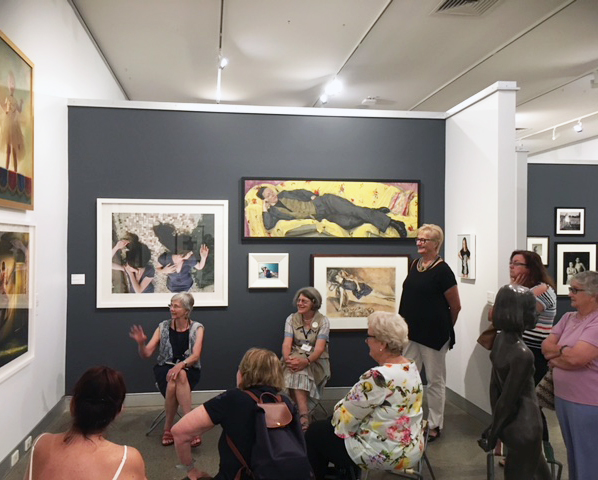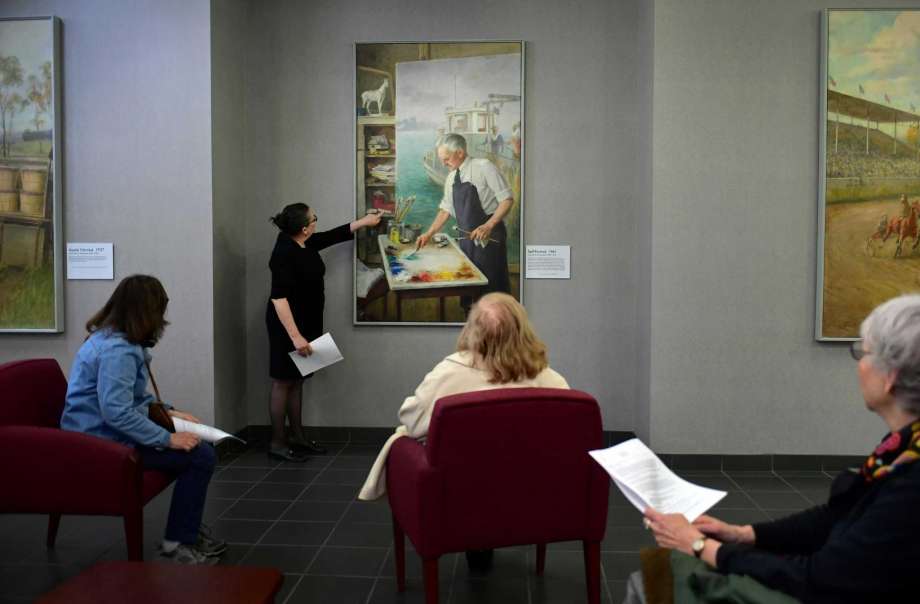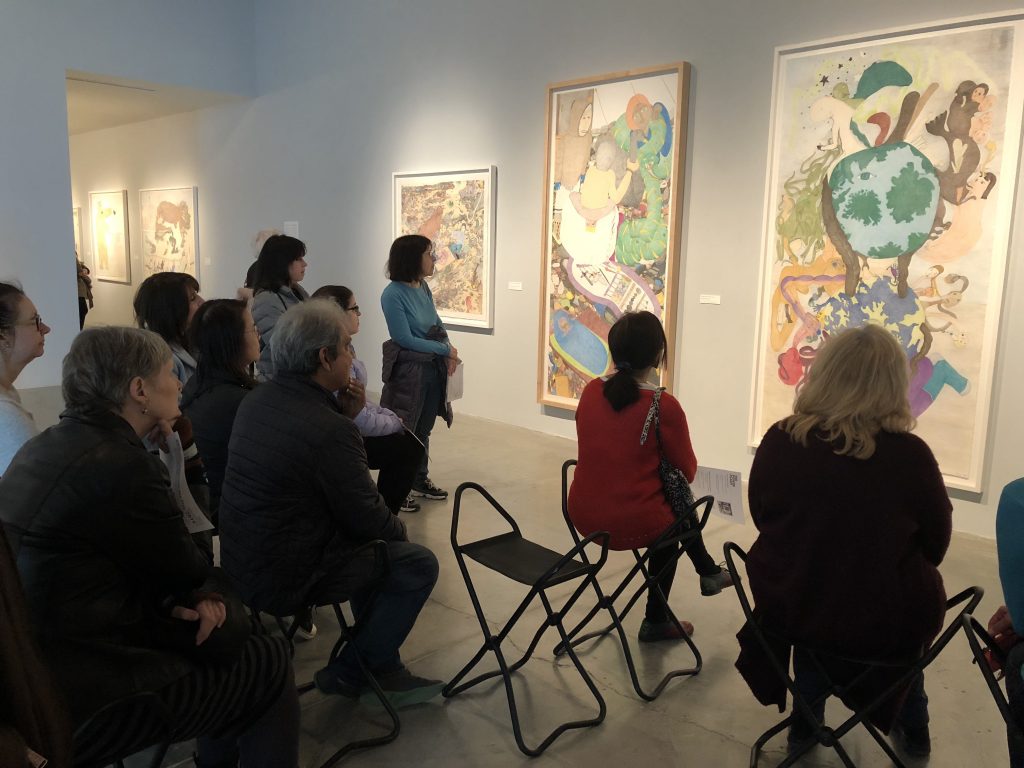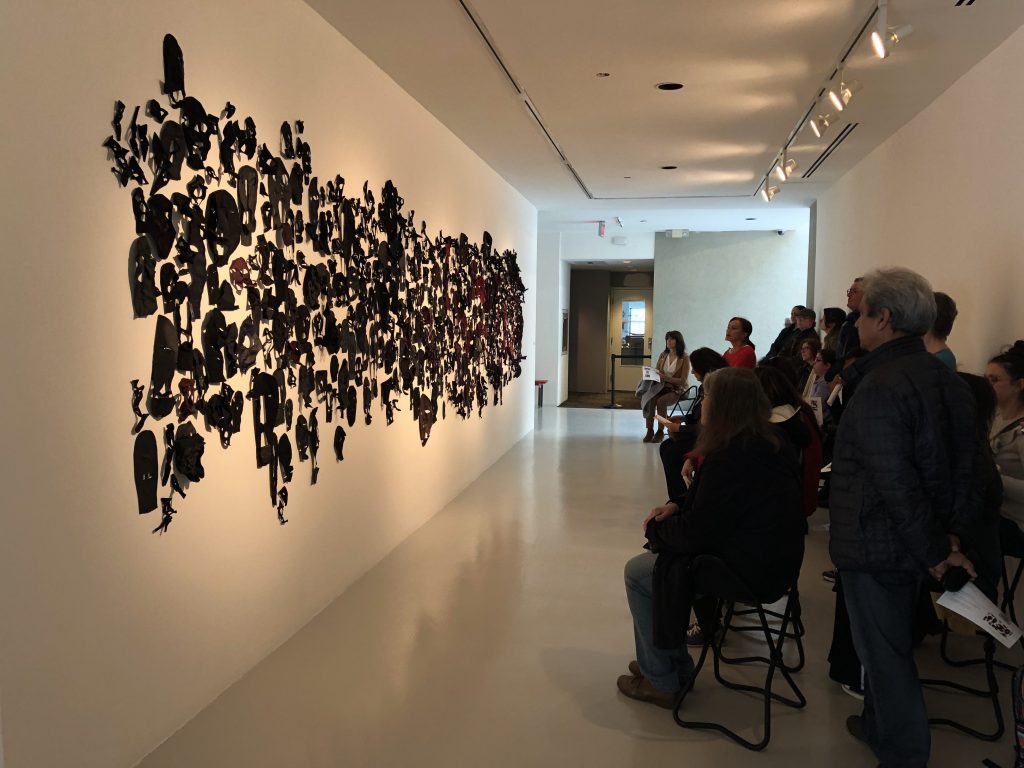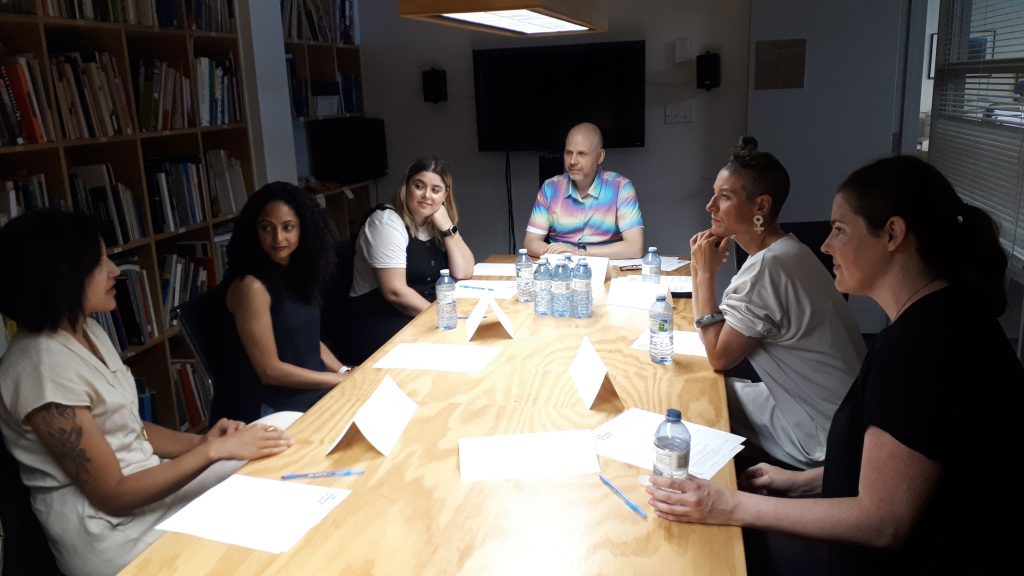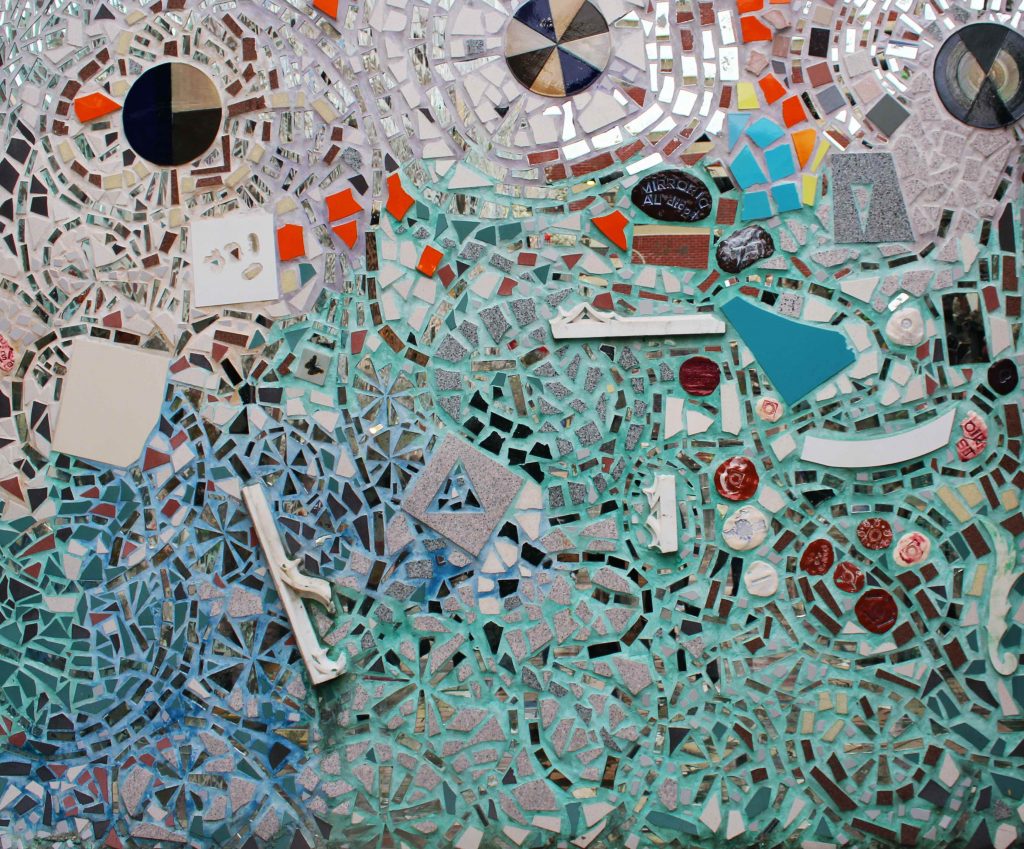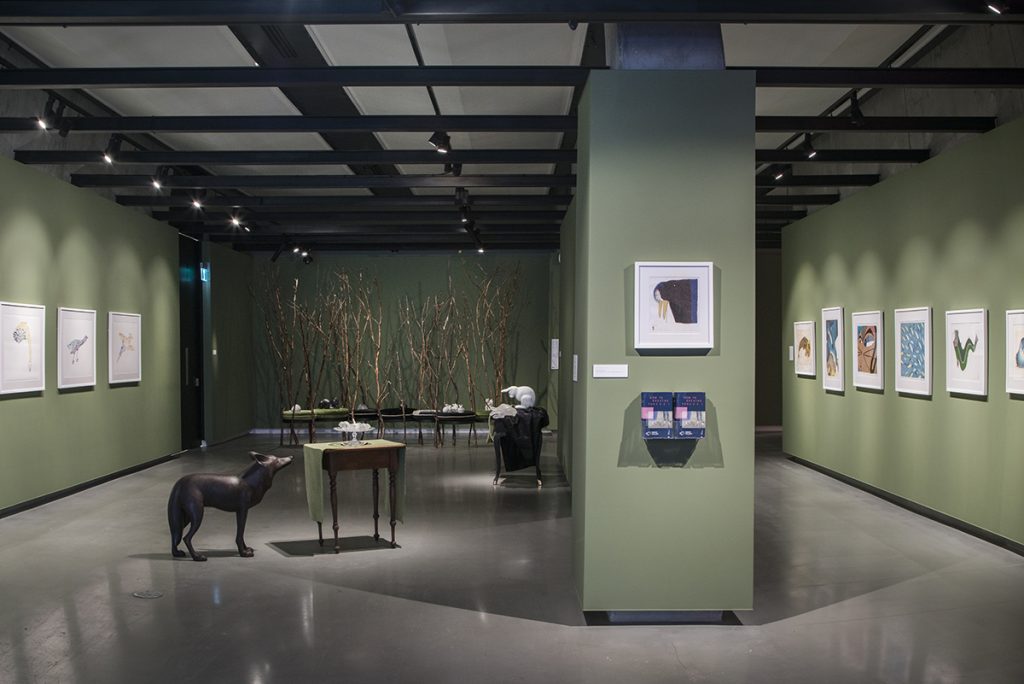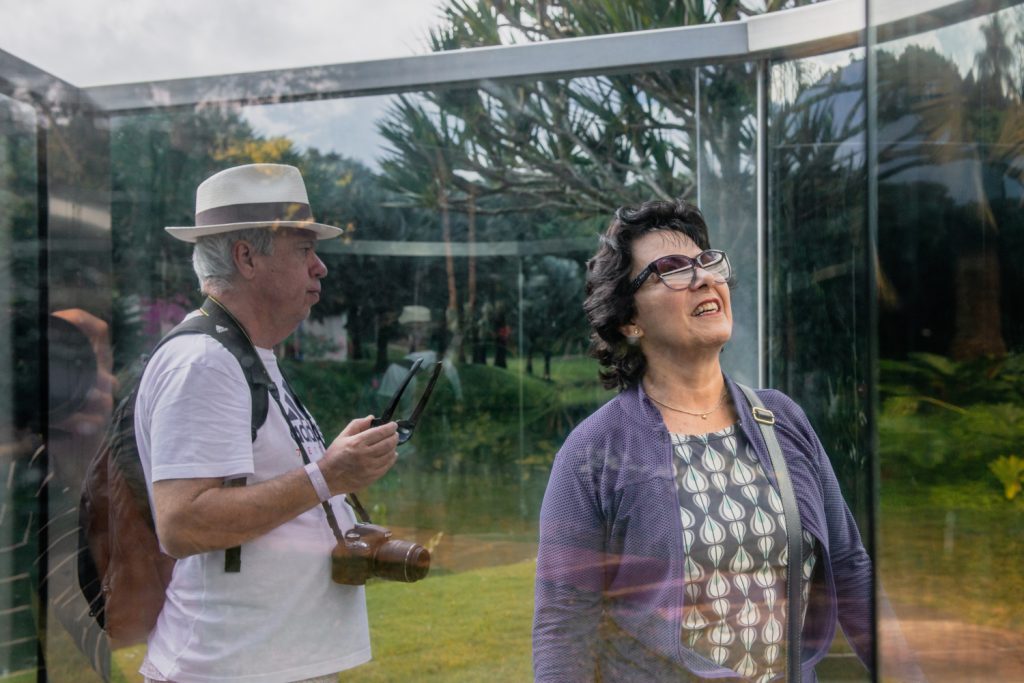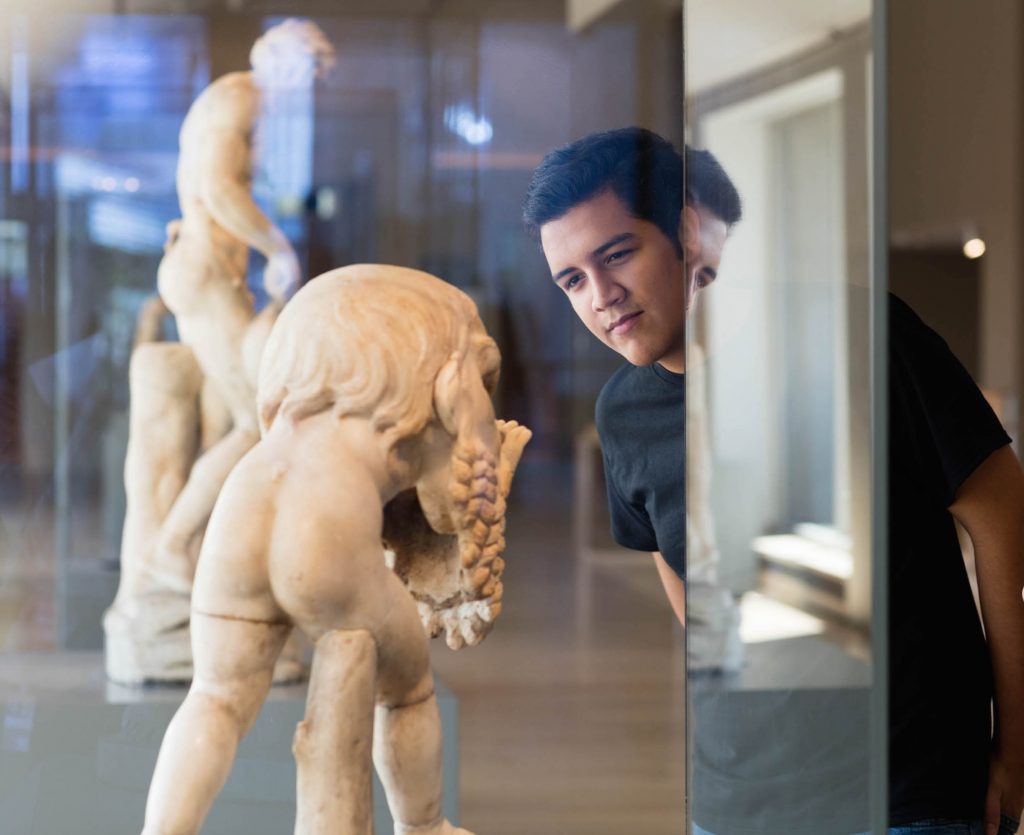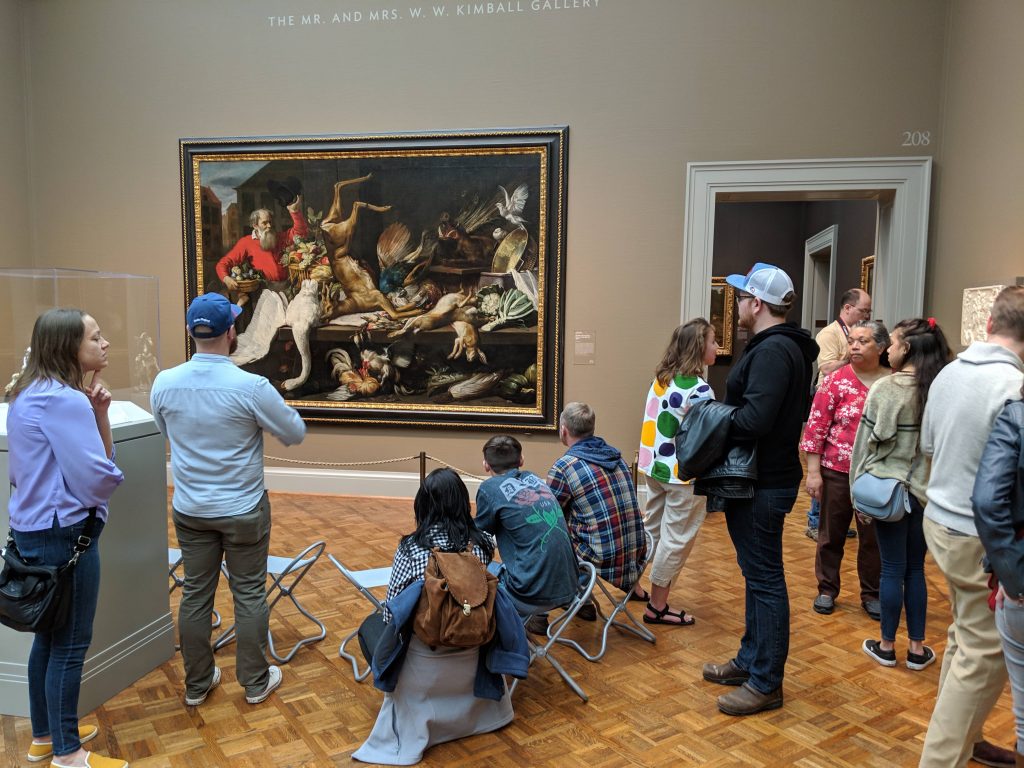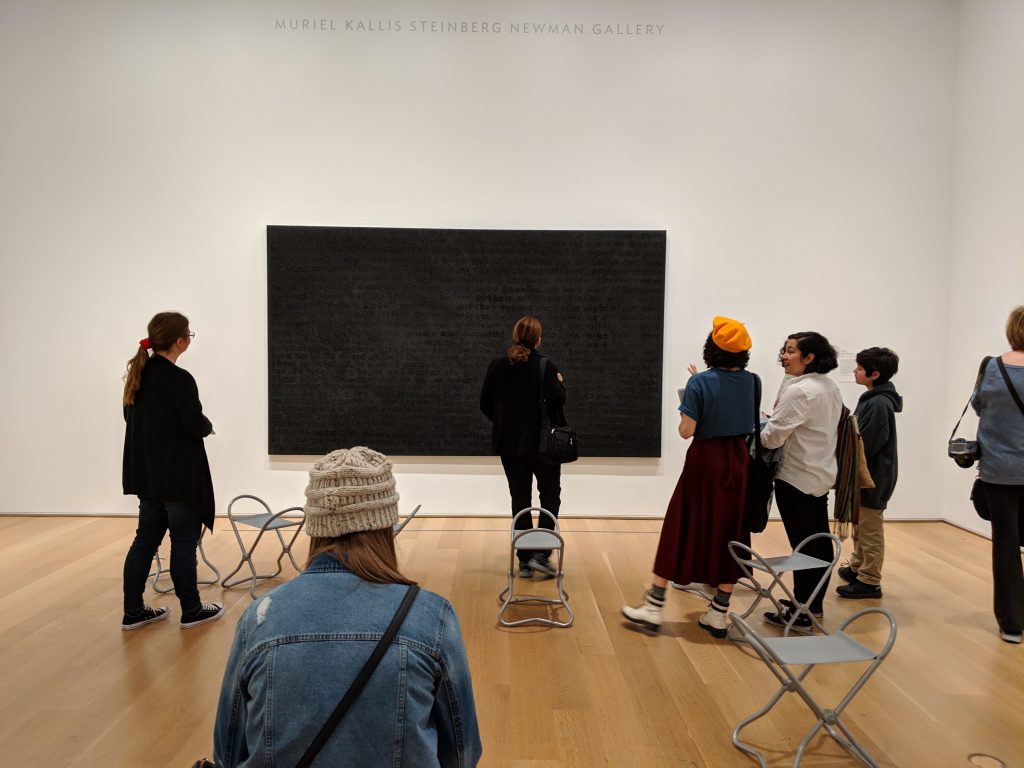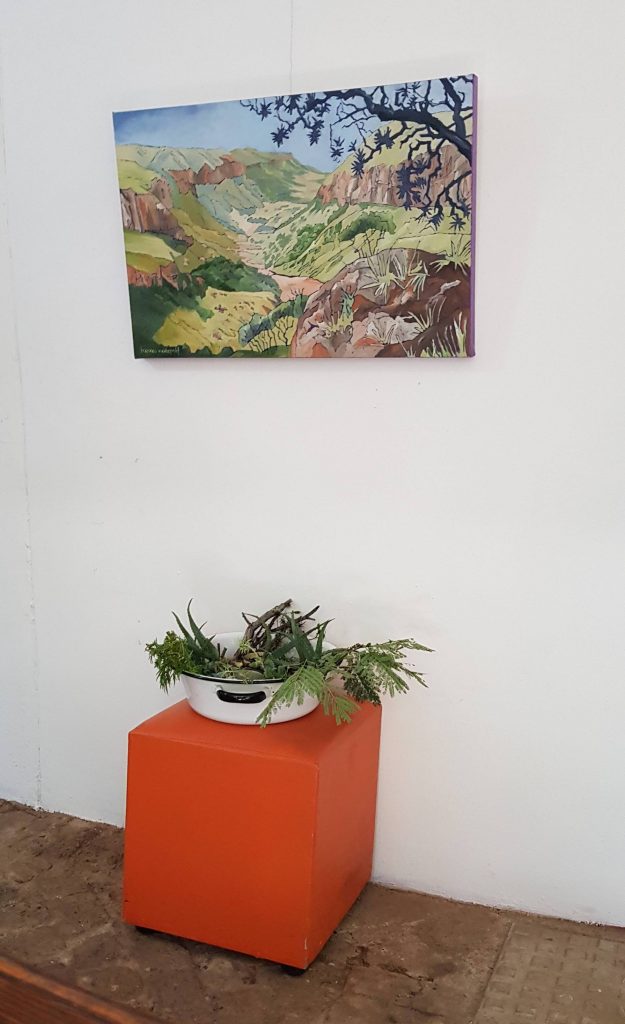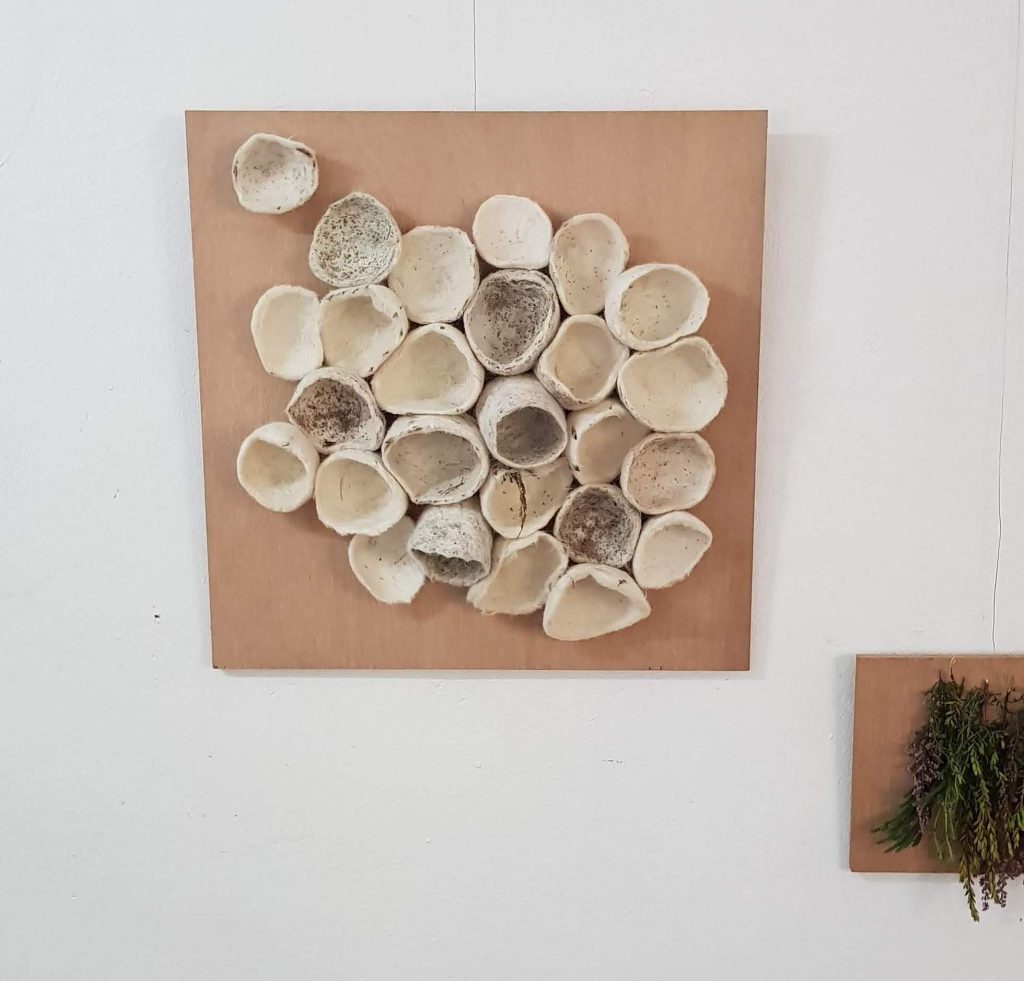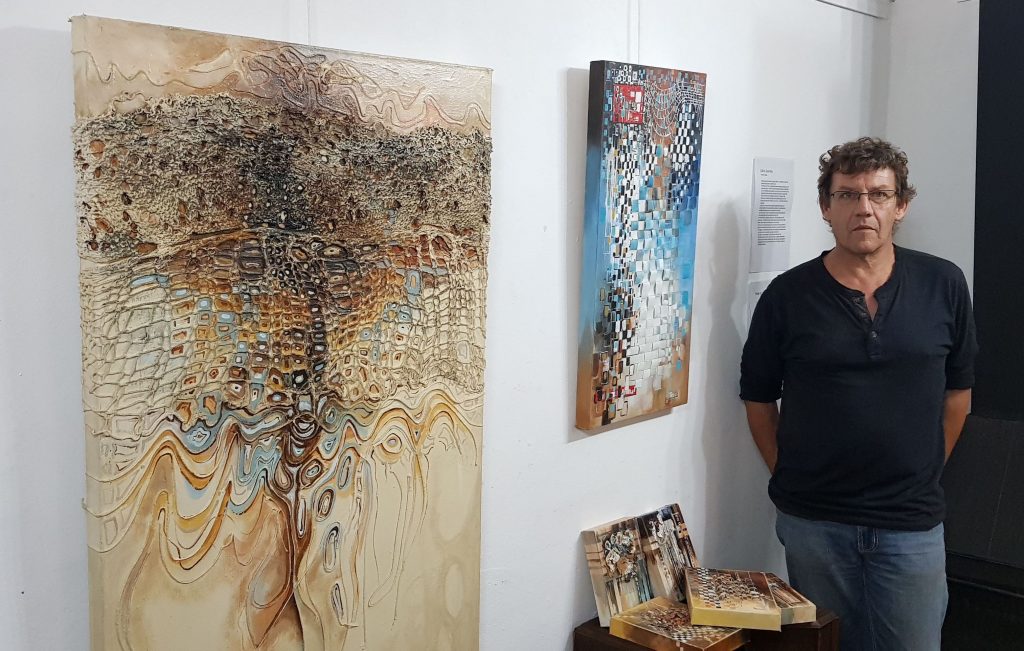For their first Slow Art Day event, InterAccess in Toronto, Canada examined slow looking in relation to time-based media. They welcomed renowned artist Lisa Steele to the gallery to lead a two-hour tour of the exhibition of Daniel Young & Christian Giroux’s work Film Path / Camera Path with under-titles, which merges sculpture practice with film installation using high tech design and manufacturing technologies.
First, Lisa Steele led a discussion with participants on slow looking, and invited them to read aloud the artist-contributed texts that accompanied the show, written by John Barlow, Ina Blom, Eric Cazdyn, Geoffrey Farmer, Agnieszka Gratza, Daniel Hambleton, Erín Moure, Bridget Moser, Judy Radul, Patricia Reed, Reza Negarestani, Mohammad Salemy, and Michael Snow.
Next, the visitors were encouraged to take time viewing the three different components of Young & Giroux’s work in the gallery – the film screen, the mechanical sculpture, and an LED sign displaying the texts the participants had read earlier in the session.
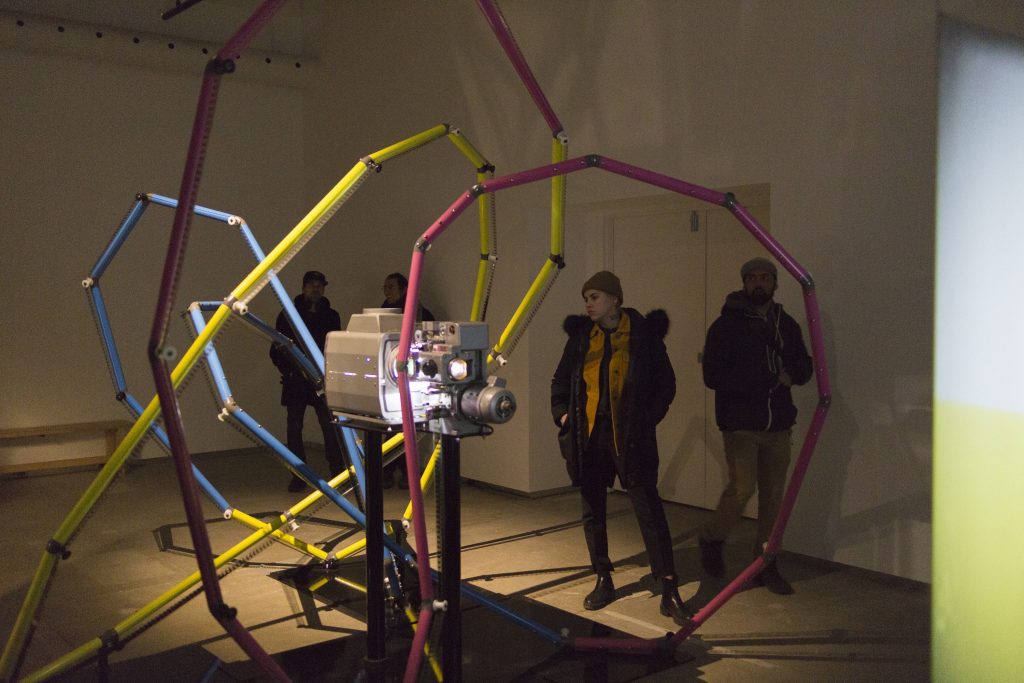
We love to hear how organizations promote slow looking across diverse media, and look forward to seeing what InterAccess has in store for Slow Art Day 2020.
– Ashley

